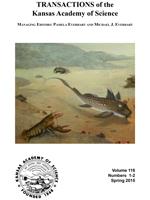Phenytoin (PHT) is an efficacious anticonvulsant agent that is commonly used in the treatment of epileptic seizures. However, the use of phenytoin during pregnancy is associated with a group of birth defects known as Fetal Hydantoin Syndrome (FHS), which include cleft palate and retarded growth. Phenytoin may cause its adverse effects through the production of reactive oxygen species (ROS). Green tea extract (GTE) contains epigallocatechin-3-gallate (EGCG), which exhibits free radical scavenging activity and may attenuate the effects of ROS. The purpose of this study was to investigate the potential of administration of GTE to attenuate teratogenic effects induced by phenytoin. Phenytoin sodium salt (in DI water adjusted to pH 11) was administered via gavage on gestation days (GD) 12 and 13, and its controls were dosed with pH-adjusted water on GD 12 and 13. GTE or DI water was administered from GD 8–16 to mated CD-1 mice. Controls received both vehicles (DI water and pH-adjusted water). Mated females were assigned to one of the following treatment groups: 400 mg/kg/d GTE only, 85 mg/kg/d PHT only, 200 mg/ kg/d GTE 85 mg/kg/d PHT, or 400 mg/kg/d GTE 85 mg/kg/d PHT. Fetuses were removed on GD 17, weighed, measured, and examined for malformations. Fetuses exposed to PHT alone showed a significant increase in the incidence of cleft palate (p ≤ 0.05) The incidence of cleft palate was lower in fetuses exposed to 200 or 400 mg/kg/d GTE, compared to fetuses exposed to PHT alone; however, the reduction was not statistically significant. Fetal weight, maternal weight gain, and the incidence of fetal resorptions did not differ significantly among treatment groups. Prior and concurrent exposure to GTE may have reduced the incidence of cleft palate in fetuses exposed to PHT, but any reduction appears to have been modest under the current experimental conditions.
How to translate text using browser tools
1 April 2015
Investigations into Concurrent Exposure to Green Tea Extract and Phenytoin on the Incidence of Cleft Palate in CD-1 Mice
Hanna Kim,
Brittany M. Miller,
Dokyong Kim,
Betty J. Herring,
Amanda L. Logsdon,
Jarrett E. Lockard,
Xuan T. Lam,
Kyle K. Wells,
Ronald D. Hood,
Melissa M. Bailey
ACCESS THE FULL ARTICLE





